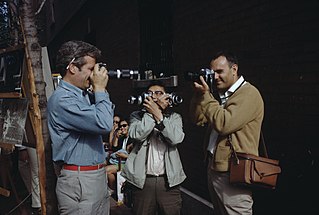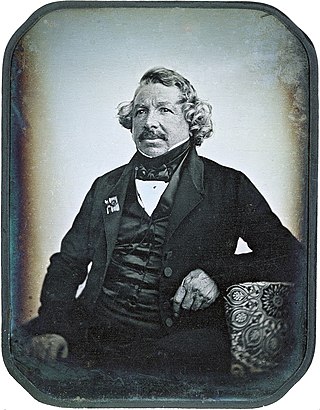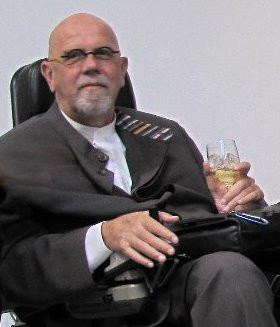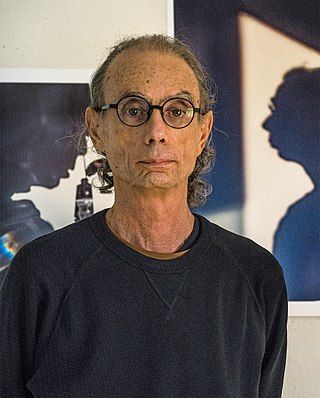Related Research Articles

Photography is the art, application, and practice of creating durable images by recording light, either electronically by means of an image sensor, or chemically by means of a light-sensitive material such as photographic film. It is employed in many fields of science, manufacturing, and business, as well as its more direct uses for art, film and video production, recreational purposes, hobby, and mass communication.

Calotype or talbotype is an early photographic process introduced in 1841 by William Henry Fox Talbot, using paper coated with silver iodide. Paper texture effects in calotype photography limit the ability of this early process to record low contrast details and textures. The term calotype comes from the Ancient Greek καλός, "beautiful", and τύπος, "impression".

William Henry Fox Talbot FRS FRSE FRAS was an English scientist, inventor, and photography pioneer who invented the salted paper and calotype processes, precursors to photographic processes of the later 19th and 20th centuries. His work in the 1840s on photomechanical reproduction led to the creation of the photoglyphic engraving process, the precursor to photogravure. He was the holder of a controversial patent that affected the early development of commercial photography in Britain. He was also a noted photographer who contributed to the development of photography as an artistic medium. He published The Pencil of Nature (1844–1846), which was illustrated with original salted paper prints from his calotype negatives and made some important early photographs of Oxford, Paris, Reading, and York.

Daguerreotype was the first publicly available photographic process; it was widely used during the 1840s and 1850s. "Daguerreotype" also refers to an image created through this process.

Louis-Jacques-Mandé Daguerre was a French artist and photographer, recognized for his invention of the eponymous daguerreotype process of photography. He became known as one of the fathers of photography. Though he is most famous for his contributions to photography, he was also an accomplished painter, scenic designer, and a developer of the diorama theatre.
Robert Frank was a Swiss photographer and documentary filmmaker, who became an American binational. His most notable work, the 1958 book titled The Americans, earned Frank comparisons to a modern-day de Tocqueville for his fresh and nuanced outsider's view of American society. Critic Sean O'Hagan, writing in The Guardian in 2014, said The Americans "changed the nature of photography, what it could say and how it could say it. [ ... ] it remains perhaps the most influential photography book of the 20th century." Frank later expanded into film and video and experimented with manipulating photographs and photomontage.
Panoramic photography is a technique of photography, using specialized equipment or software, that captures images with horizontally elongated fields of view. It is sometimes known as wide format photography. The term has also been applied to a photograph that is cropped to a relatively wide aspect ratio, like the familiar letterbox format in wide-screen video.

Berenice Alice Abbott was an American photographer best known for her portraits of between-the-wars 20th century cultural figures, New York City photographs of architecture and urban design of the 1930s, and science interpretation in the 1940s to 1960s.
William Eggleston is an American photographer. He is widely credited with increasing recognition for color photography as a legitimate artistic medium. Eggleston's books include William Eggleston's Guide (1976) and The Democratic Forest (1989).

Charles Thomas Close was an American painter, visual artist, and photographer who made massive-scale photorealist and abstract portraits of himself and others. Close also created photo portraits using a very large format camera. He adapted his painting style and working methods in 1988, after being paralyzed by an occlusion of the anterior spinal artery.

The history of photography began with the discovery of two critical principles: camera obscura image projection and the observation that some substances are visibly altered by exposure to light. There are no artifacts or descriptions that indicate any attempt to capture images with light sensitive materials prior to the 18th century.

Hand-colouring refers to any method of manually adding colour to a monochrome photograph, generally either to heighten the realism of the image or for artistic purposes. Hand-colouring is also known as hand painting or overpainting.
Adam Fuss is a British photographer.

Henry Wessel was an American photographer and educator. He made "obdurately spare and often wry black-and-white pictures of vernacular scenes in the American West".
The following outline is provided as an overview of and topical guide to photography:
Binh Danh is an American artist known for chlorophyll prints and daguerreotypes on the subjects of war, immigration, and National Parks.
John P. Jacob is an American curator. He grew up in Italy and Venezuela, graduated from the Collegiate School (1975) in New York City, and studied at the University of Chicago before earning a BA in human ecology from the College of the Atlantic (1981) and an MA in art history from Indiana University (1994).
The practice and appreciation of photographyin the United States began in the 19th century, when various advances in the development of photography took place and after daguerreotype photography was introduced in France in 1839. The earliest commercialization of photography was made in the country when Alexander Walcott and John Johnson opened the first commercial portrait gallery in 1840. In 1866, the first color photograph was taken. Only in the 1880s, would photography expand to a mass audience with the first easy-to-use, lightweight Kodak camera, issued by George Eastman and his company.
Quentin Bajac is a French museum curator and art historian specialising in the history of photography. He is the director of the Galerie nationale du Jeu de Paume in Paris.

David Lebe is an American photographer. He is best known for his experimental images using techniques such as pinhole cameras, hand-painted photographs, photograms, and light drawings. Many of his photographs explore issues of gay identity, homoeroticism, and living with AIDS, linking his work to that of contemporaries such as Robert Mapplethorpe, Peter Hujar, and David Wojnarowicz. Though his style and approach set him apart from these contemporaries, "Lebe is now incontrovertibly part of the history of twentieth-century queer artists."
References
- ↑ Friedman, Martin (2005). Close Reading: Chuck Close and the Art of the Self-Portrait. Harry N Abrams. pp. 156, 339. ISBN 0-8109-5920-8.
- ↑ "Tacoma Art Museum Presents Chuck Close Portraits". ArtDaily. Ignacio Villarreal Jr. 2007-12-12. Retrieved 2007-01-03.